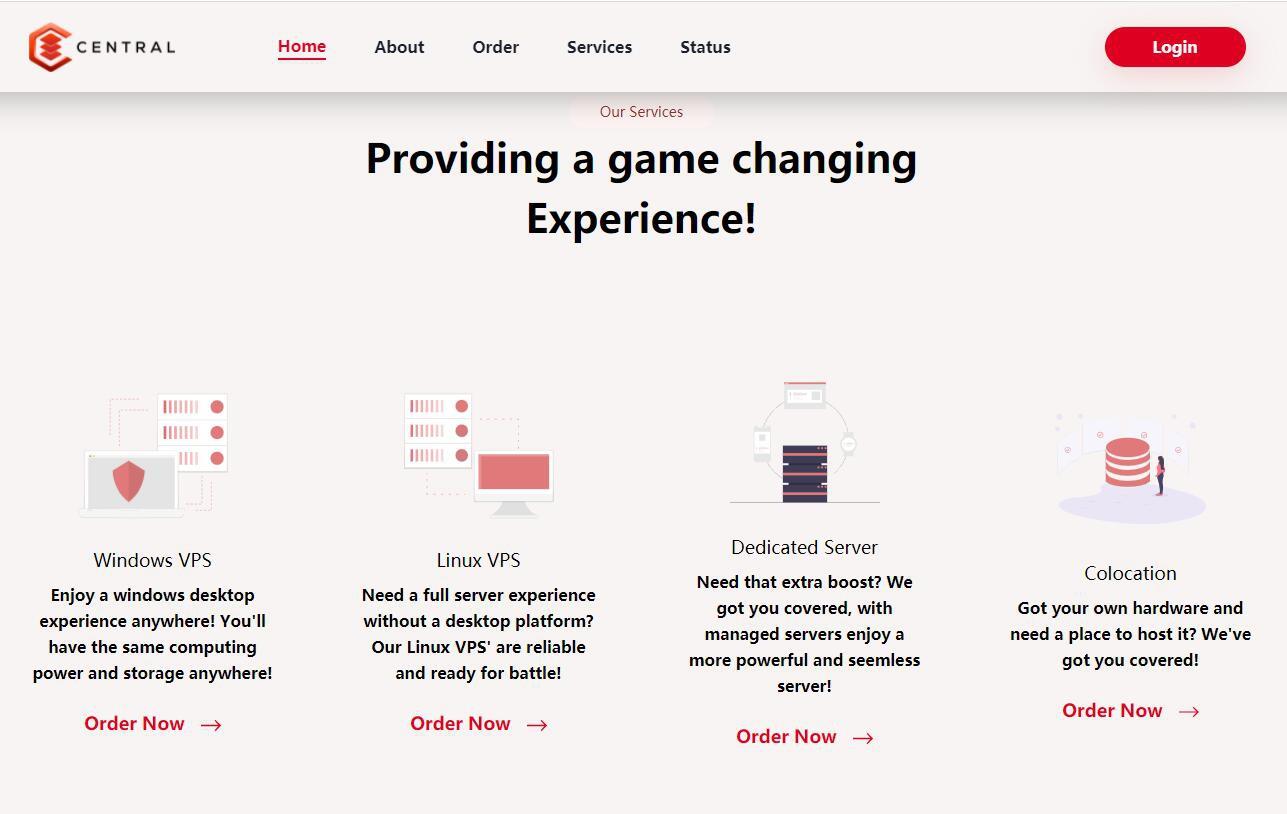lyboatman
boatman 时间:2021-04-14 阅读:()
LifelongEducationandLaborMarketNeedsAnexaminationofhowongoinglearningbenefitsthesociety,thecorporationandtheindividualManyNorthAmericanshavetroublekeepingpacewiththechangesoccurringintoday'swork-place.
Despitetheexistenceof9.
3millionunemployedAmericans,thecountryexperiencedashortageof7millionskilledworkersin2010,ashortagethatisexpectedtoclimbto21millionby2020.
Alackofeducationalattainmentsitsattherootoftheissue.
Somuchso,thatunlessmoreNorthAmericansstrivetoachieveahigherlevelofeducation,averageincomepercapitaisgoingtodeclinewithinthenextdecade.
TheEvoLLLutioncommissionedanindependentresearchfirmtoanalyzethechangingdynamicsbetweenlifelongeducationandworkforceproductivity.
Theresearchincludedin-depthinter-viewswithNorthAmericanemployersfromthreedifferentsectorsoftheeconomy,aswellasathoroughreviewofexistingresearch.
Theresultsoftheprimaryresearchrevealthatemployersbelieveongoingeducationandskillupgradestobecriticallyimportantintoday'sworkplace.
70%ofemployersbelievethatemploy-eesneedcontinuouslearningsimplytokeepupwiththedemandsoftheircurrentjobs.
Beyondkeepingup,ongoingeducationhelpsemployeesascendthecorporateladder,allowingcorpora-tionstosignificantlyreducetheirbottomlinebyavoidingthehighcostsassociatedwithoutsidehires.
Inadditiontobenefitingsocietyandthecorporation,continuingeducationandprofessionaldevelopmenteffortsrewardtheindividualwithincreasedcompensation,withnearly9/10ofem-ployersfactoringitintopayincreases.
Laborneedsvarybyindustry.
Ofcourse,eachindustryhasslightlydifferenteducationneeds.
Regulationsandcredentialsdrivelearninginthehealthcareindustry.
Thetechnologysectorre-quiresjust-in-timelearningforemployeestostayontopoftheindustry'srapidchanges,whilecompaniesinthebusinesssectorpresentmorevariedneeds.
Regardlessoftheindustry,systemsareinplaceforemployeestogetaheadintheworkplace,buttheymusttakeadvantageofthelearningopportunitiesinordertosucceed.
ExecutiveSummary-1-AnEvoLLLutionResearchReportLifelongEducationandLaborMarketNeedsInOctober2011,TheEvoLLLutioncommis-sionedanindependentmarketresearchfirmtointerview200employersfromacrossNorthAmericarangingfrommid-sizedfirmswithapproximately250employeestolargefirmswithover100,000employees.
iThecompanies,basedintheUnitedStates(166)andCanada(34),camefromthefollowingindustries:Theresearchsetouttounderstandtheper-spectivesemployersholdaboutlifelonglearn-ingandhighereducationinlightofthemassivechangesrecentlyexperiencedbytheworkforceandtheresultingstructuralunemploymentfac-ingthenation.
Theresearchaddressedthesecorequestions:1.
Whatdoemployeesneedtodotogetahead2.
Howareemployeesrewardedorotherwisecompensatedfortheireducationalefforts3.
HowdoesemployeelearningaffectthecompanyandthelargersocietySurveyBackgroundWorkplacerolesandrequirementsarechang-ingatanunprecedentedrate.
Oftheemploy-erssurveyed,70%believethatemployeesneedcontinuouseducationjusttokeeppacewiththedemandsoftheircurrentjobs.
Whileon-the-jobtrainingorotherinformalmethodsoflearningcanbesomewhatuseful,formaledu-cationisconsideredtobemuchmoreeffec-tive.
Arecentglobalstudyof12,500managersstronglyconcludedthatformaleducationwasthemosteffectivewaytodevelopnecessaryworkplaceskills,outscoringallothertrainingmethods.
iiDespitewidespreadrecognitionoftheimpor-tanceofformaleducation,theaverageedu-cationleveloftheAmericanworkforceisex-pectedtodeclineinthenextdecade,furtherwideningthegapbetweentheskillsrequiredbytheeconomyandtheskillspossessedbythelaborforce.
iiiAlready,93%ofmid-levelpro-fessionaljobsrequireanAssociatesdegreeorhigher,yetonly38%ofworkingageAmericanshaveattainedthislevelofeducation.
ivThisre-sultantgapbetweeneducationlevelsandlabormarketneedsisonedriverbehindthehistori-callyhighlevelsofstructuralunemployment.
12.
7millionAmericans(8.
2%oftheworking-agepopulation)wereunemployedin2010,vyetthenationexperiencedashortageof7millionskilledworkers,ashortagethatisexpectedtoballoonto21millionworkersby2020.
viLeftun-changed,theskillsgapwillcontributetoade-clineintheaveragepercapitaincomeduringthenext10years,unlessmoreAmericansat-tainthenecessarylevelofeducation—alevelofeducationthatiscontinuouslyupgradedoverthedurationofacareer.
viiIntroduction:ContinuousEducationisVitalforaSuccessfulWorkforce,EconomicSecurityToday'srapidpaceofchangedemandsthatworkerscontinuouslyeducatethemselvesinordertoavoidstagnatingtheeconomy#ofbusinessessurveyedSectorTechnologyHealthcareGeneralBusiness54628493%ofmid-levelpositionsrequireatleastanAssociatesdegreeOnly38%ofAmericanspossessatleastanAssociatesdegreeDegreeRequirementsVSAttainment-2-AnEvoLLLutionResearchReportLifelongEducationandLaborMarketNeedsEmployersshowastrongpreferenceforpro-motingtheirownemployeesintomid-levelpo-sitions,butmanydonothavequalifiedcandi-datestofillthesejobs.
Aspreviouslyindicated,employeesarelargelyunabletokeepupwiththeirjobswithoutongoingeducationandassuchtheycannotbepromoted.
Justundertwo-thirdsofemployerssaidtheyfirstlookinternal-lytofillmanagement-levelpositions.
However,overone-thirdofemployersreportedthattheyareforcedtolookexternallytofillthoseposi-tionsbecause:Currentemployeessimplydon'thavetheskillsneededformid-levelposi-tionsandhavemadelittleattempttoac-quiretherequiredknowledgeandskills.
Toomanyemployeeshadbeenpromotedwithoutthenecessaryskillsinthepast.
Thereareoftennotenoughquali-fiedpeopleinternallytomoveintoamid-levelposition;thosethatarequali-fiedhavealreadybeenpromotedorre-questedtheadditionalresponsibility.
Theorganizationlacksadefinedin-houseemployeedevelopmentplanprocess.
Hiringstafffromoutsidetheorganizationcansignificantlyincreasecostsforemployers.
Re-cruitingandtrainingarecostlyinitiativesthatcanbeavoidedthroughinternalpromotions,butfailureisassociatedwithaneverhigherpricetagforthecorporation.
Withinfouryears,64%ofexternallyhiredexecutiveswillfailattheirnewjobs.
viiiBycomparison,62%ofinter-nallypromotedexecutiveswillstillbewiththecompanyand46%willbepromotedasecondtime.
ixForexecutivepositions,thecostsassoci-atedwithturnovercanbeashighas24timesthebasesalary.
xThecostofreplacingafailedemployeetendstobebetween30-45%ofthebasesalary.
xiDevelopingexistingpersonnelthroughon-go-ingeducationisclearlyaneffectivemeansofmanaginglaborcosts.
Mid-levelpositionsre-quireafairlyhighdegreeofeducation.
How-ever,companiesaremorethanwillingtogiveentry-levelemployeestimetoprocurethesecredentialsinpreparationforadvancement.
While93%ofmid-levelpositionsrequireatleastatwo-yeardegreeand47%requireasec-ondarydegreeontopofabachelor'sdegree,only80%ofentry-leveljobsrequireatwo-yeardegreeorhigher,andonly14%requireanad-vanceddegreeontopofabachelor'sdegree.
Bysystematicallyeducatingcurrentemploy-ees,companiesensuretheirworkersareper-formingoptimallyattheircurrentpositionandpreparethemtoadvance.
Therefore,theyareabletobuoytheirbottomlinenotonlythroughincreasedworkerproductivity,butalsobyde-creasingtheirturnoverrateandhiringcosts.
TheChallengeofPromotingfromWithinAnundereducatedworkforcehasseriousimplicationsforthebottomlineofcompanies.
Inadditiontodecreasedproductivity,undereducatedemployeescannotbepromoted,andassuchemployersmustmakecostlyexternalhiresinordertofillmidandhigh-levelpositionsMid-levelpositionsrequireamuchhigherlevelofeducationthanentrylevelpositions.
Employeesmustthereforeupgradetheireducationinordertobepromotedoradvance.
-3-AnEvoLLLutionResearchReportLifelongEducationandLaborMarketNeedsLevelofEducationRequireforEntryLevelJobscomparedtoMid-LevelJobsHighschooldipolomaornothingAssociate'sdegreeAssociate'sdegreeorprofessionallicensureBachelor'sdegreeBachelor'sdegreeorprofessionallicensureMaster'sdegreeorprofessionallicensureProfessionallicensureEntryLevelPositionsMid-LevelPositionsEmployersagreedthateducationprovidessig-nificantvaluetothecompanythroughouttheemployeelifecycle,frominitialhiretopromotionandonwards.
Duringthehiringphase,educa-tionalattainmentgivesemployersawaytovetprospects,savingbothtimeandmoney.
Infact,moreemployersusedscholarlycredentials—morethananyothermeans—asawayofveri-fyingaprospectiveemployee'sknowledgeandskills.
Thebenefitsoflifelongeducation,however,aregreatestaftertheinitialhire.
96%ofemploy-erssaidongoingeducationhasapositiveimpactontheiremployees'jobperformance.
Accordingtoemployers,certainkeycharacteristicsdifferen-tiatethelifelonglearnersfromtherestoftheiremployees.
Lifelonglearnersdemonstrateambi-tion,leadership,andadesiretoremainaheadofindustrytrendsandadvancements.
Thereisclearevidencefromthesurveythatem-ployersarewillingtorewardemployeesfortheireducationalefforts.
78%ofemployerssaidongo-ingeducationhasapositiveimpactoncareerad-vancementand87%saideducationalattainmentpositivelyaffectscompensationandsalary.
Morethanhalfofrespondentsrevealedthatcredentialaccumulationdirectlyaffectspay.
AccordingtoareportbytheGeorgetownUniversity'sCenterofEducationandtheWorkforce,employeeswhoengageinongoingeducationregularlyearnbe-tween3-11%morethantheircounterparts.
xiiEmployershavesentaclearsignalthatongoingeducationwillberewarded.
Reasonscitedbyemployersinclude:Continuouseducationhelpsemployeestakeonmoreprojectsandhasapositiveimpactonthequalityofworktheyarecompleting.
Employeeswhotakecontinuingeduca-tionareenhancingtheirskillsetwithintheframeworkoftheirworkenvironment.
Continuingeducationmakesemployeesmorequalifiedandeasiertopromote.
95%oftheemployersstudiedstatedthattheyfinanciallysupportemployeeeducationthroughvariousmeans.
However,employeesrarelytakeadvantageoftheseopportunities.
AccordingtoastudybyBersinandAssociates,when10%ofemployeesparticipateinatuitionreimbursementprogramitisconsidered"veryhigh"participa-tion.
xiiiEmployerssuggestedthatthemostcom-monfactorforthelowparticipationrateswaspooremployeemotivation.
EmployersAreGettingPositiveReturnsonEducationandRewardEmployeesAccordinglyCompaniesrewardemployeeswhoparticipateinlifelongeducationwithincreasedcompensationandadvancement96%Yes4%NoDoesongoingeducationhaveapositiveimpactonjobperformance13%No87%YesDoesongoingeducationaffectcompensationandsalary78%Yes22%NoDoesongoingeducationfactorintopromotionandadvancementEmployersSayOngoingEducationhasPositiveImplicationsfortheCompanyandtheEmployeeEmployersrecognizetheimpactofongoingeducationandrewardtheiremployeesaccordingly.
-4-AnEvoLLLutionResearchReportLifelongEducationandLaborMarketNeedsMoore'sLawstatesthatcomputingpowerdoublesevery18-24months.
Itisnotsurprising,then,thatthevastmajorityoftechnologyemployersstressedtheimportanceofongoingeducationasameansofmaintainingcurrencyinthefield.
94%statedthatongoingeducationis"important"fortheirmid-levelprofessionals,whilenearlytwo-thirdsofsaiditwas"veryimportant".
Thetechnologysectorplacessignificantempha-sisonthedevelopmentofskills,butismuchlessconcernedwithformalcredentials.
75%oftechnol-ogysectoremployerssaidongoinglearningwascrucialfortheiremployeestokeeppacewiththeirjobs,yet69%havenopreferenceforcreditornon-creditcourses—bothstatisticsbeingthehighestofanyindustry.
Technologysectoremployeestendtofavor"just-in-time"learning,withclearlydefinedoutcomes.
Thisisreflectedinthepreference(72%)inthissectorforshort-termseminars,individualcoursesorcertificateprograms-amarked29%increaseovertheaverageinthetwoothersectors.
Employersinthetechnologysectorarealsomostlikelytopromotefromwithinratherthanhireex-ternally,with71%ofemployerslookinginternallytofillmid-levelpositions.
Inordertobesttakeadvan-tageofthis,employeesmustengageinongoingeducation.
Althoughemployershavelittleprefer-enceastowhetheremployeestakefor-creditornon-creditcourses,employeesatcertainstagesoftheircareersmaybebestservedbyfocusingonformal,for-crediteducation.
Whereasonly47%ofentry-levelpositionsrequireafour-yeardegreeorhigher,85%ofmidlevelpositionsrequirethesame.
Furthermore,only18%ofentry-levelpositionsre-quireprofessionallicensure,whereas58%ofmid-levelpositionshavethisrequirement.
Succeedinginthetechnologysectorrequiresemployeestostayontopofindustrytrendsandchangesinskillrequirements.
Assuch,employeesshouldlookforlicensuresandcertificatesthatpro-videthemwiththespecificcompetenciesneededbyemployersintheirindustry.
ReturnonEducationInvestmentByIndustryOngoingeducationbenefitssociety,thecompanyandtheindividual;however,thetypeofeducationanditsparticularimpactvariessignificantlybyindustryTechnology-5-AnEvoLLLutionResearchReportLifelongEducationandLaborMarketNeedsHealthcareOngoingeducationplaysalargerandmoreofficialroleinhealthcarethanineitheroftheothersec-torsstudied.
98%ofhealthcareemployersbelievedthatongoingeducationhasapositiveimpactontheiremployees'jobperformance.
Asoneemploy-erpointedout,participationinlifelongeducationdemonstratesawillingnesstolearnmoreabouttheindustry,andadesiretomakemore-informeddecisions.
Healthcareindustryemployersaremorewillingtocompensateemployeelearningthanemployersinothersectors.
89%ofemployerssaidthecomple-tionofadditionalstudywhileemployedisapositivefactorinemployeeadvancementandpromotion,a14%increaseoverthetechnologysectoranda24%increaseoverthegeneralbusinesssector.
Further-more,95%ofemployersstatethateducationhasapositiveimpactonpayscale,with68%notingadirectcorrelation.
Oneemployerpointedoutthatearningadvanceddegreesisrewardedwitha5%payincrease.
Whileongoingeducationplaysasubstantialroleinthehealthcarefield,15%feweremployerssaidthateducationisnecessaryforemployeestokeeppacewiththeirjobsthandidemployersinthetechnolo-gysector.
Thisapparentcontradictionisexplainedbytheimportanceofregulationandaccreditationinthehealthcaresector.
Manypositionsinhealthcareareregulated,andrequirespecificeducationalcredentials.
PersonnelareoftenrequiredtoobtainCEU's(ContinuingEducationUnits)inordertomaintaintheirlicensure,earnpromotions,orboth.
Theimportanceofongoingeducationinhealth-care,though,variesbyleveloftheposition.
Thisismadeespeciallyclearwhenconsideringthedif-ferenceinrequirementsbetweenentry-levelandmid-levelpositions.
Ontheonehand,entrylevelpositionsinthehealthcarefieldrequirealowerlevelofeducationthanotherfields,withonly41%ofjobsrequiringabachelorsdegreeorhigher.
Ontheotherhand,87%ofmid-levelpositionspossessthesamerequirements.
ThesurveyresultsmadeGeneralBusiness92%ofgeneralbusiness-sectoremployersre-spondedthatitwasimportantfortheiremployeestoparticipateinongoingeducationduringtheiremployment.
Nonetheless,ongoingeducationisconsideredlessimportantinthissectorthaninthetechnologyorhealthcaresectors.
Thiscouldbeex-plainedbythefactthatthegeneralbusinesssectorplacesgreateremphasisonpracticalandappliedknowledgethanontheory.
Generalbusinesssec-toremployersfrequentlypointedoutthatmorepracticalcourseswithaspectrumofsoft-skillsin-corporatedintothecurriculumwouldincreasetherelevancyofformallearningopportunities.
Amonggeneralbusinessemployers,only71%saidthatcompletionofadditionalstudyisafactorinpromotionandadvancement—lessthanthetech-nology(77%)orhealthcare(89%)industries.
How-ever,increasedcredentialsarestilloftenrequiredtoadvance.
Only51%ofentry-levelpositionsrequireabachelor'sdegreeorhigher,whereas80%ofmid-levelpositionsrequireone.
Despitetheirlowerlevelofrelianceoneducation,95%ofgeneralbusinesssectoremployersagreedthatongoingeducationhasapositiveimpactonemployeejobperfor-mance.
Furthermore,79%ofemployersdrewalinkbetweensalaryandeducationalattainment,manypointingoutthevirtuesofemployeeswhoshowdedicationtoobtainingnewskillsandfur-therintegratingthemselvesfurtherintotheircho-senindustry.
Thedevelopmentofsoftskills,suchascommunication,management,andacustomerserviceorientation,areofparticularimportanceinthebusinesssector.
-6-AnEvoLLLutionResearchReportLifelongEducationandLaborMarketNeedsitclearthatthetypeofeducationismoreimpor-tantinthissectorthanintheothers.
48%ofsec-toremployersfeltindustry-specificcoursesweremostvaluablefortheiremployeestoenrollin—morethananyothersector.
44%ofhealthcareem-ployerspreferfor-creditcoursesovernon-creditcourses—adeparturefromothersectorsinwhichthedifferenceislessmarked.
Employeesappeartohaverespondedaccordingly:84%ofemployeesenrollindegree,certificateorlicensureprograms.
Healthcaresectoremployeesaremorethantwiceaslikelytoenrollinlicensureprogramsthanareemployeesintheothertwosectorsstudied.
Giventhehighlyregulatednatureofthehealthcareindustry,employersmostvaluefor-creditlicensure,certificateanddegreeprogramsforemployees.
Toadvanceinthehealthcareindustry,employeesmustensuretheyaretakingprogramsthatprovidethemwithrequiredcredentials.
Percentageofemployerswhohavenopreferenceforwhetheremployeestakecreditornon-creditclasses94%98%92%Percentageofemployerswhobelieveemployeesneedongoingeducationjusttokeepupwiththeirjobs.
10%20%30%40%50%60%70%80%90%0%63%69%55%10%20%30%40%50%60%70%80%90%0%72%75%63%TechnologyIndustryHealthcareIndustryGeneralBusinessLegendKeyStatisticsbyIndustryPercentageofemployerswhobelieveongoingeducationisimportantforemployees.
Eachsectorhasslightlydifferentusesandlevelsofrelianceoneducation.
Forexample,thetechnologysectorreliesonedu-cationforemployeestokeepupwiththerapidpaceofchange,whereasthehealthcarefieldreliesoncertificationstokeepemployeesonparwithtightregulations.
Ongoingeducationishighlyvaluedbyemploy-ersacrossallthreesectorsasawaytodevelopmoreproductiveandbetter-equippedemploy-ees.
Consequently,employerstakestepstoen-surethattheiremployeeshaveaccesstocon-tinuingeducation.
Thegrowingemphasisonongoingeducationisreflectedinadultenroll-mentnumberscollectedbytheNationalCen-terforEducationStatistics(NCES).
Accordingtothegroup,enrollmentofadultstudentshasincreasedby43%overallduringthepastde-cade,makingup42%ofstudentsenrolledinhighereducationinstitutionsinfall2009.
Thiscomparedtoonlya27%increaseof"traditionalage"studentsinthesameperiod.
xivOverthenextdecade,theNCESpredictstherewillbeafurther23%increaseinthenumberofadultstudentsattendingdegree-grantingpost-sec-ondaryinstitutions,andonlya9%increasein"traditional"students.
xvClearly,formallearningcannolongerceaseonceastudententerstheworkforce.
Continu-ingeducationisintegraltothesuccessoftheemployee,thecompanyandsociety-at-large.
Themostsuccessfulemployeeswillcontinuelearningthroughtheirlifetime.
Postsecondaryinstitutions,fortheirpart,shouldbepreparedtoworkcloselywithcorporateclientsinordertounderstandandultimatelymeettheneedsofadultlearnersintheworkforce.
Conclusion:IncreasingNumbersofAdultsareEnrollinginContinuingHigherEducationtoClimbtheCorporateLadderHighereducationinstitutionsmustadapttoservetheneedsofthisgrowingpopulationofnon-traditionalstudents-7-AnEvoLLLutionResearchReportLifelongEducationandLaborMarketNeedsReferences-8-AnEvoLLLutionResearchReportLifelongEducationandLaborMarketNeedsiAslanianMarketResearchiiJazmineBoatmanandRichardS.
Wellins,"TimeforaLeadershipRevolution:GlobalLeader-shipForecast2011,"DevelopmentDimensionsInternational,2011,p.
24,availablefromhttp://www.
ddiworld.
com/DDIWorld/media/trend-research/globalleadershipforecast2011_globalre-port_ddi.
pdf.
iiiTheNationalCenterforPublicPolicyandHigherEducation,"IncomeofU.
S.
WorkforcePro-jectedtoDeclineIFEducationDoesn'tImprove,"November2005,p.
1,availablefromhttp://www.
highereducation.
org/reports/pa_decline/pa_decline.
pdf.
ivDewayneMatthews,"Astrongernationthroughhighereducation:HowandwhyAmericansmustachieveaBigGoalforcollegeattainment,"LuminaFoundation,March2012,p.
4,avail-ablefromhttp://www.
luminafoundation.
org/publications/A_Stronger_Nation-2012.
pdf.
v"TheEmploymentSituation–March2012,"BureauofLaborStatisticspressrelease,April6,2012,ontheBureauofLaborStatisticswebsite,http://www.
bls.
gov/news.
release/archives/empsit_04062012.
htm.
viRobertT.
Jones,"TheNewAmericanWorkforce:ChallengesandOpportunitiesforHigherEducation,"EducationWorkforcePolicy,LLP,2010,availablefromhttp://www.
educationwork-forcepolicy.
com/papers.
html.
viiTheNationalCenterforPublicPolicyandHigherEducation,"IncomeofU.
S.
WorkforcePro-jectedtoDeclineIFEducationDoesn'tImprove,"p.
7.
viiiDanCiampaandMichaelD.
Watkins,RightfromtheStart:TakingChargeinaNewLeader-shipRole(Boston:HarvardBusinessPress,2005),p.
4.
ixIbid.
xBradfordD.
Smart,Topgrading:HowLeadingCompaniesWinbyHiring,CoachingandKeep-ingtheBestPeople(NewYork:PenguinGroup,1997),p.
46.
xiPaulR.
BernthalandRichardSWellins,"RetainingTalent:ABenchmarkingSummary,"De-velopmentDimensionsInternational,February2001,p.
8,availablefromhttp://www.
ddiworld.
com/DDIWorld/media/trend-research/retainingtalentabenchmarkingstudy_fullreport_ddi.
pdfext=.
pdf.
xiiAnthonyP.
Carnevale,NicoleSmithandJeffStrohl,"HelpWanted;ProjectionsofJobsandEducationRequirementsThrough2018,"GeorgetownUniversityCenterofEducationandtheWorkforce,June2010,p.
10,availablefromhttp://www9.
georgetown.
edu/grad/gppi/hpi/cew/pdfs/HelpWanted.
FullReport.
pdf.
xiiiChrisHoward,"TuitionAssistantPrograms:ExecutiveSummary.
BestPracticesforMaximiz-ingaKeyTalentInvestment,"BersinandAssociates,January2009,p.
4,availablefromhttp://www.
bersin.
com/uploadedFiles/010609_ES_TuitionAssistance_CH_Final.
pdf.
xivThomasSnyderandSallyDillow,"DigestofEducationStatistics:2010,"NationalCenterforEducationStatisticsInstituteforEducationSciences,April2011,p.
293,availablefromhttp://nces.
ed.
gov/pubs2011/2011015.
pdf.
xvIbid.
2012DestinySolutionsInc.
Allrightsreserved.
Theinformationcontainedhereinissubjecttochangewith-outnotice.
DestinySolutionsshallnotbeliablefortechnicaloreditorialerrorsoromissionscontainedherein.
EVO32-O612,PublishedJuly2012
Despitetheexistenceof9.
3millionunemployedAmericans,thecountryexperiencedashortageof7millionskilledworkersin2010,ashortagethatisexpectedtoclimbto21millionby2020.
Alackofeducationalattainmentsitsattherootoftheissue.
Somuchso,thatunlessmoreNorthAmericansstrivetoachieveahigherlevelofeducation,averageincomepercapitaisgoingtodeclinewithinthenextdecade.
TheEvoLLLutioncommissionedanindependentresearchfirmtoanalyzethechangingdynamicsbetweenlifelongeducationandworkforceproductivity.
Theresearchincludedin-depthinter-viewswithNorthAmericanemployersfromthreedifferentsectorsoftheeconomy,aswellasathoroughreviewofexistingresearch.
Theresultsoftheprimaryresearchrevealthatemployersbelieveongoingeducationandskillupgradestobecriticallyimportantintoday'sworkplace.
70%ofemployersbelievethatemploy-eesneedcontinuouslearningsimplytokeepupwiththedemandsoftheircurrentjobs.
Beyondkeepingup,ongoingeducationhelpsemployeesascendthecorporateladder,allowingcorpora-tionstosignificantlyreducetheirbottomlinebyavoidingthehighcostsassociatedwithoutsidehires.
Inadditiontobenefitingsocietyandthecorporation,continuingeducationandprofessionaldevelopmenteffortsrewardtheindividualwithincreasedcompensation,withnearly9/10ofem-ployersfactoringitintopayincreases.
Laborneedsvarybyindustry.
Ofcourse,eachindustryhasslightlydifferenteducationneeds.
Regulationsandcredentialsdrivelearninginthehealthcareindustry.
Thetechnologysectorre-quiresjust-in-timelearningforemployeestostayontopoftheindustry'srapidchanges,whilecompaniesinthebusinesssectorpresentmorevariedneeds.
Regardlessoftheindustry,systemsareinplaceforemployeestogetaheadintheworkplace,buttheymusttakeadvantageofthelearningopportunitiesinordertosucceed.
ExecutiveSummary-1-AnEvoLLLutionResearchReportLifelongEducationandLaborMarketNeedsInOctober2011,TheEvoLLLutioncommis-sionedanindependentmarketresearchfirmtointerview200employersfromacrossNorthAmericarangingfrommid-sizedfirmswithapproximately250employeestolargefirmswithover100,000employees.
iThecompanies,basedintheUnitedStates(166)andCanada(34),camefromthefollowingindustries:Theresearchsetouttounderstandtheper-spectivesemployersholdaboutlifelonglearn-ingandhighereducationinlightofthemassivechangesrecentlyexperiencedbytheworkforceandtheresultingstructuralunemploymentfac-ingthenation.
Theresearchaddressedthesecorequestions:1.
Whatdoemployeesneedtodotogetahead2.
Howareemployeesrewardedorotherwisecompensatedfortheireducationalefforts3.
HowdoesemployeelearningaffectthecompanyandthelargersocietySurveyBackgroundWorkplacerolesandrequirementsarechang-ingatanunprecedentedrate.
Oftheemploy-erssurveyed,70%believethatemployeesneedcontinuouseducationjusttokeeppacewiththedemandsoftheircurrentjobs.
Whileon-the-jobtrainingorotherinformalmethodsoflearningcanbesomewhatuseful,formaledu-cationisconsideredtobemuchmoreeffec-tive.
Arecentglobalstudyof12,500managersstronglyconcludedthatformaleducationwasthemosteffectivewaytodevelopnecessaryworkplaceskills,outscoringallothertrainingmethods.
iiDespitewidespreadrecognitionoftheimpor-tanceofformaleducation,theaverageedu-cationleveloftheAmericanworkforceisex-pectedtodeclineinthenextdecade,furtherwideningthegapbetweentheskillsrequiredbytheeconomyandtheskillspossessedbythelaborforce.
iiiAlready,93%ofmid-levelpro-fessionaljobsrequireanAssociatesdegreeorhigher,yetonly38%ofworkingageAmericanshaveattainedthislevelofeducation.
ivThisre-sultantgapbetweeneducationlevelsandlabormarketneedsisonedriverbehindthehistori-callyhighlevelsofstructuralunemployment.
12.
7millionAmericans(8.
2%oftheworking-agepopulation)wereunemployedin2010,vyetthenationexperiencedashortageof7millionskilledworkers,ashortagethatisexpectedtoballoonto21millionworkersby2020.
viLeftun-changed,theskillsgapwillcontributetoade-clineintheaveragepercapitaincomeduringthenext10years,unlessmoreAmericansat-tainthenecessarylevelofeducation—alevelofeducationthatiscontinuouslyupgradedoverthedurationofacareer.
viiIntroduction:ContinuousEducationisVitalforaSuccessfulWorkforce,EconomicSecurityToday'srapidpaceofchangedemandsthatworkerscontinuouslyeducatethemselvesinordertoavoidstagnatingtheeconomy#ofbusinessessurveyedSectorTechnologyHealthcareGeneralBusiness54628493%ofmid-levelpositionsrequireatleastanAssociatesdegreeOnly38%ofAmericanspossessatleastanAssociatesdegreeDegreeRequirementsVSAttainment-2-AnEvoLLLutionResearchReportLifelongEducationandLaborMarketNeedsEmployersshowastrongpreferenceforpro-motingtheirownemployeesintomid-levelpo-sitions,butmanydonothavequalifiedcandi-datestofillthesejobs.
Aspreviouslyindicated,employeesarelargelyunabletokeepupwiththeirjobswithoutongoingeducationandassuchtheycannotbepromoted.
Justundertwo-thirdsofemployerssaidtheyfirstlookinternal-lytofillmanagement-levelpositions.
However,overone-thirdofemployersreportedthattheyareforcedtolookexternallytofillthoseposi-tionsbecause:Currentemployeessimplydon'thavetheskillsneededformid-levelposi-tionsandhavemadelittleattempttoac-quiretherequiredknowledgeandskills.
Toomanyemployeeshadbeenpromotedwithoutthenecessaryskillsinthepast.
Thereareoftennotenoughquali-fiedpeopleinternallytomoveintoamid-levelposition;thosethatarequali-fiedhavealreadybeenpromotedorre-questedtheadditionalresponsibility.
Theorganizationlacksadefinedin-houseemployeedevelopmentplanprocess.
Hiringstafffromoutsidetheorganizationcansignificantlyincreasecostsforemployers.
Re-cruitingandtrainingarecostlyinitiativesthatcanbeavoidedthroughinternalpromotions,butfailureisassociatedwithaneverhigherpricetagforthecorporation.
Withinfouryears,64%ofexternallyhiredexecutiveswillfailattheirnewjobs.
viiiBycomparison,62%ofinter-nallypromotedexecutiveswillstillbewiththecompanyand46%willbepromotedasecondtime.
ixForexecutivepositions,thecostsassoci-atedwithturnovercanbeashighas24timesthebasesalary.
xThecostofreplacingafailedemployeetendstobebetween30-45%ofthebasesalary.
xiDevelopingexistingpersonnelthroughon-go-ingeducationisclearlyaneffectivemeansofmanaginglaborcosts.
Mid-levelpositionsre-quireafairlyhighdegreeofeducation.
How-ever,companiesaremorethanwillingtogiveentry-levelemployeestimetoprocurethesecredentialsinpreparationforadvancement.
While93%ofmid-levelpositionsrequireatleastatwo-yeardegreeand47%requireasec-ondarydegreeontopofabachelor'sdegree,only80%ofentry-leveljobsrequireatwo-yeardegreeorhigher,andonly14%requireanad-vanceddegreeontopofabachelor'sdegree.
Bysystematicallyeducatingcurrentemploy-ees,companiesensuretheirworkersareper-formingoptimallyattheircurrentpositionandpreparethemtoadvance.
Therefore,theyareabletobuoytheirbottomlinenotonlythroughincreasedworkerproductivity,butalsobyde-creasingtheirturnoverrateandhiringcosts.
TheChallengeofPromotingfromWithinAnundereducatedworkforcehasseriousimplicationsforthebottomlineofcompanies.
Inadditiontodecreasedproductivity,undereducatedemployeescannotbepromoted,andassuchemployersmustmakecostlyexternalhiresinordertofillmidandhigh-levelpositionsMid-levelpositionsrequireamuchhigherlevelofeducationthanentrylevelpositions.
Employeesmustthereforeupgradetheireducationinordertobepromotedoradvance.
-3-AnEvoLLLutionResearchReportLifelongEducationandLaborMarketNeedsLevelofEducationRequireforEntryLevelJobscomparedtoMid-LevelJobsHighschooldipolomaornothingAssociate'sdegreeAssociate'sdegreeorprofessionallicensureBachelor'sdegreeBachelor'sdegreeorprofessionallicensureMaster'sdegreeorprofessionallicensureProfessionallicensureEntryLevelPositionsMid-LevelPositionsEmployersagreedthateducationprovidessig-nificantvaluetothecompanythroughouttheemployeelifecycle,frominitialhiretopromotionandonwards.
Duringthehiringphase,educa-tionalattainmentgivesemployersawaytovetprospects,savingbothtimeandmoney.
Infact,moreemployersusedscholarlycredentials—morethananyothermeans—asawayofveri-fyingaprospectiveemployee'sknowledgeandskills.
Thebenefitsoflifelongeducation,however,aregreatestaftertheinitialhire.
96%ofemploy-erssaidongoingeducationhasapositiveimpactontheiremployees'jobperformance.
Accordingtoemployers,certainkeycharacteristicsdifferen-tiatethelifelonglearnersfromtherestoftheiremployees.
Lifelonglearnersdemonstrateambi-tion,leadership,andadesiretoremainaheadofindustrytrendsandadvancements.
Thereisclearevidencefromthesurveythatem-ployersarewillingtorewardemployeesfortheireducationalefforts.
78%ofemployerssaidongo-ingeducationhasapositiveimpactoncareerad-vancementand87%saideducationalattainmentpositivelyaffectscompensationandsalary.
Morethanhalfofrespondentsrevealedthatcredentialaccumulationdirectlyaffectspay.
AccordingtoareportbytheGeorgetownUniversity'sCenterofEducationandtheWorkforce,employeeswhoengageinongoingeducationregularlyearnbe-tween3-11%morethantheircounterparts.
xiiEmployershavesentaclearsignalthatongoingeducationwillberewarded.
Reasonscitedbyemployersinclude:Continuouseducationhelpsemployeestakeonmoreprojectsandhasapositiveimpactonthequalityofworktheyarecompleting.
Employeeswhotakecontinuingeduca-tionareenhancingtheirskillsetwithintheframeworkoftheirworkenvironment.
Continuingeducationmakesemployeesmorequalifiedandeasiertopromote.
95%oftheemployersstudiedstatedthattheyfinanciallysupportemployeeeducationthroughvariousmeans.
However,employeesrarelytakeadvantageoftheseopportunities.
AccordingtoastudybyBersinandAssociates,when10%ofemployeesparticipateinatuitionreimbursementprogramitisconsidered"veryhigh"participa-tion.
xiiiEmployerssuggestedthatthemostcom-monfactorforthelowparticipationrateswaspooremployeemotivation.
EmployersAreGettingPositiveReturnsonEducationandRewardEmployeesAccordinglyCompaniesrewardemployeeswhoparticipateinlifelongeducationwithincreasedcompensationandadvancement96%Yes4%NoDoesongoingeducationhaveapositiveimpactonjobperformance13%No87%YesDoesongoingeducationaffectcompensationandsalary78%Yes22%NoDoesongoingeducationfactorintopromotionandadvancementEmployersSayOngoingEducationhasPositiveImplicationsfortheCompanyandtheEmployeeEmployersrecognizetheimpactofongoingeducationandrewardtheiremployeesaccordingly.
-4-AnEvoLLLutionResearchReportLifelongEducationandLaborMarketNeedsMoore'sLawstatesthatcomputingpowerdoublesevery18-24months.
Itisnotsurprising,then,thatthevastmajorityoftechnologyemployersstressedtheimportanceofongoingeducationasameansofmaintainingcurrencyinthefield.
94%statedthatongoingeducationis"important"fortheirmid-levelprofessionals,whilenearlytwo-thirdsofsaiditwas"veryimportant".
Thetechnologysectorplacessignificantempha-sisonthedevelopmentofskills,butismuchlessconcernedwithformalcredentials.
75%oftechnol-ogysectoremployerssaidongoinglearningwascrucialfortheiremployeestokeeppacewiththeirjobs,yet69%havenopreferenceforcreditornon-creditcourses—bothstatisticsbeingthehighestofanyindustry.
Technologysectoremployeestendtofavor"just-in-time"learning,withclearlydefinedoutcomes.
Thisisreflectedinthepreference(72%)inthissectorforshort-termseminars,individualcoursesorcertificateprograms-amarked29%increaseovertheaverageinthetwoothersectors.
Employersinthetechnologysectorarealsomostlikelytopromotefromwithinratherthanhireex-ternally,with71%ofemployerslookinginternallytofillmid-levelpositions.
Inordertobesttakeadvan-tageofthis,employeesmustengageinongoingeducation.
Althoughemployershavelittleprefer-enceastowhetheremployeestakefor-creditornon-creditcourses,employeesatcertainstagesoftheircareersmaybebestservedbyfocusingonformal,for-crediteducation.
Whereasonly47%ofentry-levelpositionsrequireafour-yeardegreeorhigher,85%ofmidlevelpositionsrequirethesame.
Furthermore,only18%ofentry-levelpositionsre-quireprofessionallicensure,whereas58%ofmid-levelpositionshavethisrequirement.
Succeedinginthetechnologysectorrequiresemployeestostayontopofindustrytrendsandchangesinskillrequirements.
Assuch,employeesshouldlookforlicensuresandcertificatesthatpro-videthemwiththespecificcompetenciesneededbyemployersintheirindustry.
ReturnonEducationInvestmentByIndustryOngoingeducationbenefitssociety,thecompanyandtheindividual;however,thetypeofeducationanditsparticularimpactvariessignificantlybyindustryTechnology-5-AnEvoLLLutionResearchReportLifelongEducationandLaborMarketNeedsHealthcareOngoingeducationplaysalargerandmoreofficialroleinhealthcarethanineitheroftheothersec-torsstudied.
98%ofhealthcareemployersbelievedthatongoingeducationhasapositiveimpactontheiremployees'jobperformance.
Asoneemploy-erpointedout,participationinlifelongeducationdemonstratesawillingnesstolearnmoreabouttheindustry,andadesiretomakemore-informeddecisions.
Healthcareindustryemployersaremorewillingtocompensateemployeelearningthanemployersinothersectors.
89%ofemployerssaidthecomple-tionofadditionalstudywhileemployedisapositivefactorinemployeeadvancementandpromotion,a14%increaseoverthetechnologysectoranda24%increaseoverthegeneralbusinesssector.
Further-more,95%ofemployersstatethateducationhasapositiveimpactonpayscale,with68%notingadirectcorrelation.
Oneemployerpointedoutthatearningadvanceddegreesisrewardedwitha5%payincrease.
Whileongoingeducationplaysasubstantialroleinthehealthcarefield,15%feweremployerssaidthateducationisnecessaryforemployeestokeeppacewiththeirjobsthandidemployersinthetechnolo-gysector.
Thisapparentcontradictionisexplainedbytheimportanceofregulationandaccreditationinthehealthcaresector.
Manypositionsinhealthcareareregulated,andrequirespecificeducationalcredentials.
PersonnelareoftenrequiredtoobtainCEU's(ContinuingEducationUnits)inordertomaintaintheirlicensure,earnpromotions,orboth.
Theimportanceofongoingeducationinhealth-care,though,variesbyleveloftheposition.
Thisismadeespeciallyclearwhenconsideringthedif-ferenceinrequirementsbetweenentry-levelandmid-levelpositions.
Ontheonehand,entrylevelpositionsinthehealthcarefieldrequirealowerlevelofeducationthanotherfields,withonly41%ofjobsrequiringabachelorsdegreeorhigher.
Ontheotherhand,87%ofmid-levelpositionspossessthesamerequirements.
ThesurveyresultsmadeGeneralBusiness92%ofgeneralbusiness-sectoremployersre-spondedthatitwasimportantfortheiremployeestoparticipateinongoingeducationduringtheiremployment.
Nonetheless,ongoingeducationisconsideredlessimportantinthissectorthaninthetechnologyorhealthcaresectors.
Thiscouldbeex-plainedbythefactthatthegeneralbusinesssectorplacesgreateremphasisonpracticalandappliedknowledgethanontheory.
Generalbusinesssec-toremployersfrequentlypointedoutthatmorepracticalcourseswithaspectrumofsoft-skillsin-corporatedintothecurriculumwouldincreasetherelevancyofformallearningopportunities.
Amonggeneralbusinessemployers,only71%saidthatcompletionofadditionalstudyisafactorinpromotionandadvancement—lessthanthetech-nology(77%)orhealthcare(89%)industries.
How-ever,increasedcredentialsarestilloftenrequiredtoadvance.
Only51%ofentry-levelpositionsrequireabachelor'sdegreeorhigher,whereas80%ofmid-levelpositionsrequireone.
Despitetheirlowerlevelofrelianceoneducation,95%ofgeneralbusinesssectoremployersagreedthatongoingeducationhasapositiveimpactonemployeejobperfor-mance.
Furthermore,79%ofemployersdrewalinkbetweensalaryandeducationalattainment,manypointingoutthevirtuesofemployeeswhoshowdedicationtoobtainingnewskillsandfur-therintegratingthemselvesfurtherintotheircho-senindustry.
Thedevelopmentofsoftskills,suchascommunication,management,andacustomerserviceorientation,areofparticularimportanceinthebusinesssector.
-6-AnEvoLLLutionResearchReportLifelongEducationandLaborMarketNeedsitclearthatthetypeofeducationismoreimpor-tantinthissectorthanintheothers.
48%ofsec-toremployersfeltindustry-specificcoursesweremostvaluablefortheiremployeestoenrollin—morethananyothersector.
44%ofhealthcareem-ployerspreferfor-creditcoursesovernon-creditcourses—adeparturefromothersectorsinwhichthedifferenceislessmarked.
Employeesappeartohaverespondedaccordingly:84%ofemployeesenrollindegree,certificateorlicensureprograms.
Healthcaresectoremployeesaremorethantwiceaslikelytoenrollinlicensureprogramsthanareemployeesintheothertwosectorsstudied.
Giventhehighlyregulatednatureofthehealthcareindustry,employersmostvaluefor-creditlicensure,certificateanddegreeprogramsforemployees.
Toadvanceinthehealthcareindustry,employeesmustensuretheyaretakingprogramsthatprovidethemwithrequiredcredentials.
Percentageofemployerswhohavenopreferenceforwhetheremployeestakecreditornon-creditclasses94%98%92%Percentageofemployerswhobelieveemployeesneedongoingeducationjusttokeepupwiththeirjobs.
10%20%30%40%50%60%70%80%90%0%63%69%55%10%20%30%40%50%60%70%80%90%0%72%75%63%TechnologyIndustryHealthcareIndustryGeneralBusinessLegendKeyStatisticsbyIndustryPercentageofemployerswhobelieveongoingeducationisimportantforemployees.
Eachsectorhasslightlydifferentusesandlevelsofrelianceoneducation.
Forexample,thetechnologysectorreliesonedu-cationforemployeestokeepupwiththerapidpaceofchange,whereasthehealthcarefieldreliesoncertificationstokeepemployeesonparwithtightregulations.
Ongoingeducationishighlyvaluedbyemploy-ersacrossallthreesectorsasawaytodevelopmoreproductiveandbetter-equippedemploy-ees.
Consequently,employerstakestepstoen-surethattheiremployeeshaveaccesstocon-tinuingeducation.
Thegrowingemphasisonongoingeducationisreflectedinadultenroll-mentnumberscollectedbytheNationalCen-terforEducationStatistics(NCES).
Accordingtothegroup,enrollmentofadultstudentshasincreasedby43%overallduringthepastde-cade,makingup42%ofstudentsenrolledinhighereducationinstitutionsinfall2009.
Thiscomparedtoonlya27%increaseof"traditionalage"studentsinthesameperiod.
xivOverthenextdecade,theNCESpredictstherewillbeafurther23%increaseinthenumberofadultstudentsattendingdegree-grantingpost-sec-ondaryinstitutions,andonlya9%increasein"traditional"students.
xvClearly,formallearningcannolongerceaseonceastudententerstheworkforce.
Continu-ingeducationisintegraltothesuccessoftheemployee,thecompanyandsociety-at-large.
Themostsuccessfulemployeeswillcontinuelearningthroughtheirlifetime.
Postsecondaryinstitutions,fortheirpart,shouldbepreparedtoworkcloselywithcorporateclientsinordertounderstandandultimatelymeettheneedsofadultlearnersintheworkforce.
Conclusion:IncreasingNumbersofAdultsareEnrollinginContinuingHigherEducationtoClimbtheCorporateLadderHighereducationinstitutionsmustadapttoservetheneedsofthisgrowingpopulationofnon-traditionalstudents-7-AnEvoLLLutionResearchReportLifelongEducationandLaborMarketNeedsReferences-8-AnEvoLLLutionResearchReportLifelongEducationandLaborMarketNeedsiAslanianMarketResearchiiJazmineBoatmanandRichardS.
Wellins,"TimeforaLeadershipRevolution:GlobalLeader-shipForecast2011,"DevelopmentDimensionsInternational,2011,p.
24,availablefromhttp://www.
ddiworld.
com/DDIWorld/media/trend-research/globalleadershipforecast2011_globalre-port_ddi.
pdf.
iiiTheNationalCenterforPublicPolicyandHigherEducation,"IncomeofU.
S.
WorkforcePro-jectedtoDeclineIFEducationDoesn'tImprove,"November2005,p.
1,availablefromhttp://www.
highereducation.
org/reports/pa_decline/pa_decline.
pdf.
ivDewayneMatthews,"Astrongernationthroughhighereducation:HowandwhyAmericansmustachieveaBigGoalforcollegeattainment,"LuminaFoundation,March2012,p.
4,avail-ablefromhttp://www.
luminafoundation.
org/publications/A_Stronger_Nation-2012.
pdf.
v"TheEmploymentSituation–March2012,"BureauofLaborStatisticspressrelease,April6,2012,ontheBureauofLaborStatisticswebsite,http://www.
bls.
gov/news.
release/archives/empsit_04062012.
htm.
viRobertT.
Jones,"TheNewAmericanWorkforce:ChallengesandOpportunitiesforHigherEducation,"EducationWorkforcePolicy,LLP,2010,availablefromhttp://www.
educationwork-forcepolicy.
com/papers.
html.
viiTheNationalCenterforPublicPolicyandHigherEducation,"IncomeofU.
S.
WorkforcePro-jectedtoDeclineIFEducationDoesn'tImprove,"p.
7.
viiiDanCiampaandMichaelD.
Watkins,RightfromtheStart:TakingChargeinaNewLeader-shipRole(Boston:HarvardBusinessPress,2005),p.
4.
ixIbid.
xBradfordD.
Smart,Topgrading:HowLeadingCompaniesWinbyHiring,CoachingandKeep-ingtheBestPeople(NewYork:PenguinGroup,1997),p.
46.
xiPaulR.
BernthalandRichardSWellins,"RetainingTalent:ABenchmarkingSummary,"De-velopmentDimensionsInternational,February2001,p.
8,availablefromhttp://www.
ddiworld.
com/DDIWorld/media/trend-research/retainingtalentabenchmarkingstudy_fullreport_ddi.
pdfext=.
pdf.
xiiAnthonyP.
Carnevale,NicoleSmithandJeffStrohl,"HelpWanted;ProjectionsofJobsandEducationRequirementsThrough2018,"GeorgetownUniversityCenterofEducationandtheWorkforce,June2010,p.
10,availablefromhttp://www9.
georgetown.
edu/grad/gppi/hpi/cew/pdfs/HelpWanted.
FullReport.
pdf.
xiiiChrisHoward,"TuitionAssistantPrograms:ExecutiveSummary.
BestPracticesforMaximiz-ingaKeyTalentInvestment,"BersinandAssociates,January2009,p.
4,availablefromhttp://www.
bersin.
com/uploadedFiles/010609_ES_TuitionAssistance_CH_Final.
pdf.
xivThomasSnyderandSallyDillow,"DigestofEducationStatistics:2010,"NationalCenterforEducationStatisticsInstituteforEducationSciences,April2011,p.
293,availablefromhttp://nces.
ed.
gov/pubs2011/2011015.
pdf.
xvIbid.
2012DestinySolutionsInc.
Allrightsreserved.
Theinformationcontainedhereinissubjecttochangewith-outnotice.
DestinySolutionsshallnotbeliablefortechnicaloreditorialerrorsoromissionscontainedherein.
EVO32-O612,PublishedJuly2012
RAKsmart 2021新年新增韩国服务器及香港美国日本VPS半价
RAKsmart 商家我们肯定不算陌生,目前主要的营销客户群肯定是我们。于是在去年的时候有新增很多很多的机房,比如也有测试过的日本、香港、美国机房,这不今年有新增韩国机房(记得去年是不是也有增加过)。且如果没有记错的话,之前VPS主机也有一次磁盘故障的问题。 这不今天有看到商家新增韩国服务器产品,当然目前我还不清楚商家韩国服务器的线路和速度情况,后面我搞一台测试机进行...

火数云-618限时活动,国内云服务器大连3折,限量50台,九江7折 限量30台!
官方网站:点击访问火数云活动官网活动方案:CPU内存硬盘带宽流量架构IP机房价格购买地址4核4G50G 高效云盘20Mbps独享不限openstack1个九江287元/月立即抢购4核8G50G 高效云盘20Mbps独享不限openstack1个九江329元/月立即抢购2核2G50G 高效云盘5Mbps独享不限openstack1个大连15.9元/月立即抢购2核4G50G 高效云盘5Mbps独享不限...

Central美国65折优惠,美国达拉斯机房VPS季付赠送双倍内存
Central美国独立日活动正在进行中,旗下美国达拉斯机房VPS 65折优惠,季付赠送双倍内存(需要发工单),Central租用的Hivelocity的机房,只支持信用卡和加密货币付款,不支持paypal,需要美国独服的可以谨慎入手试试。Central怎么样?Central便宜服务器,Central自称成立于2019年,主营美国达拉斯机房Linux vps、Windows vps、专用服务器和托管...

boatman为你推荐
-
objectflashasp.net网页制作使用ASP.net技术创建一个网页,如何做?申请支付宝账户申请支付宝账号注册flashfxp注册码谁有~FLASHfxp V3.0.2的注册码~~谢谢哦!!要现在能用的!!!!三友网怎么是“三友”泉州商标注册泉州注册一个商标具体要怎么弄?具体流程是什么?中国保健养猪网中央7台致富经养猪网站后台密码破解怎样破解网站后台管理用户名密码团购程序团购的具体流程是什么?仿佛很简单便捷的样子?财务单据我是做财务的,每个月都被各种票据搞得很头疼啊?求各位大神指教好方法!